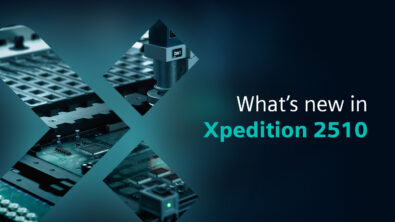Keys to successful ECAD-MCAD collaboration

ECAD-MCAD collaboration is crucial In today’s complex world of product design and development. As product designs evolve, involving smaller IC packages and more densely packed PCBs, collaboration between ECAD and MCAD teams becomes indispensable.
Why ECAD-MCAD collaboration matters
The convergence of electronics and mechanics brings a unique set of challenges. For instance, with the miniaturization of devices and more stringent PCB requirements, issues like electromechanical interference have become more prevalent. Addressing these problems requires seamless, real-time communication between ECAD and MCAD teams. Collaboration enables the identification and resolution of potential issues early, avoiding costly redesigns later in the process.
An integrated ECAD-MCAD collaboration environment ensures that both electrical and mechanical design teams can work together smoothly. Teams can share cross-domain information in real time, making incremental changes as needed. This allows them to stay synchronized and avoid errors, significantly improving the overall design process.
Key benefits of ECAD-MCAD collaboration
- Increased productivity – ECAD-MCAD collaboration fosters a more efficient design process by allowing engineers to explore “what-if” scenarios and co-design in their respective environments. The ability to design concurrently reduces bottlenecks and enhances productivity.
- Shift-left design and verification – Collaboration tools support a “shift-left” approach, allowing design and verification tasks to start earlier. Instead of waiting for physical prototypes, teams can conduct virtual validations earlier in the design phase, reducing time to market.
- First-pass success – By facilitating continuous verification throughout the design process, teams can avoid costly rework later. Early detection of electromechanical issues ensures that designs meet requirements from the start, increasing the chances of first-pass success.
- Digital thread and twin – Multi-domain collaboration tools enable teams to create and maintain a digital thread and a digital twin of their designs. This not only shortens the development time but also ensures correct-by-construction design.
Overcoming collaboration challenges
One of the main challenges in ECAD-MCAD collaboration is ensuring both domains stay informed about each other’s progress. Seamless data exchange is essential to maintain accuracy and consistency between the two domains. The process of collaboration should be automated by the design tools and utilizing the industry best practice IDX file format, allowing designers to focus on their core tasks instead of worrying about whether they are working with the latest data from the other domain.
Successful collaboration also requires a model-based design approach. This method transforms traditional systems engineering by making it model-centric rather than document-centric. Engineers develop models of the system, enabling a more accurate and comprehensive digital twin.
Model-based design and concurrent engineering
In a model-based design environment, concurrent electronics and mechanical design can be achieved. This integrated approach eliminates redundancy and minimizes rework by validating the design virtually. By reducing the need for physical prototypes, this approach also lowers costs and shortens development cycles.
Dive deeper into this topic
As the lines between electronics and mechanics continue to blur, effective ECAD-MCAD collaboration becomes even more critical. Successful collaboration requires not only the right tools but also a mindset shift toward integrated and model-based design. With the right approach and collaborative culture, teams can optimize their designs, reduce development time, and improve overall product quality. Ultimately, increasing the team’s potential for success.


